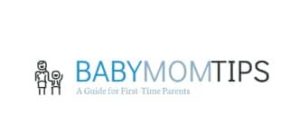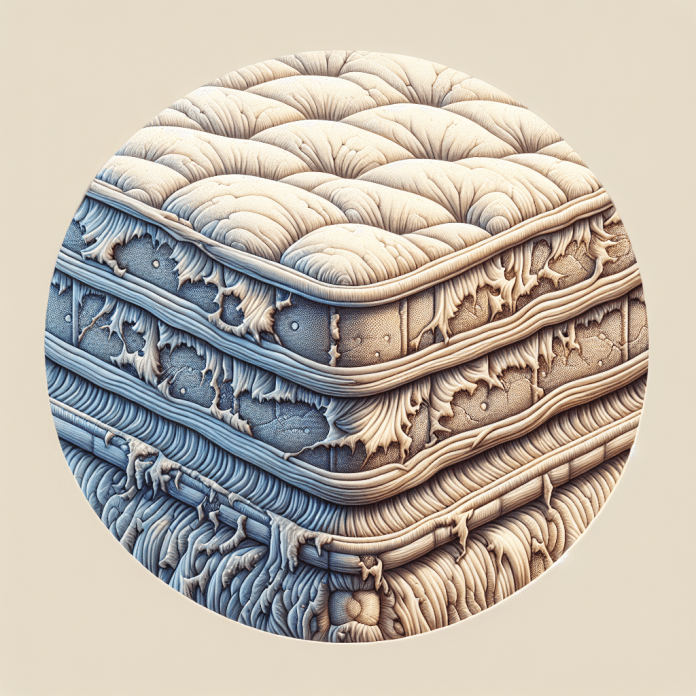As a new parent, it’s essential to prioritize your baby’s safety, and one crucial aspect is their crib mattress. But how would you know when it’s time to replace it? It’s easy to overlook signs of wear and tear, but this article will help you identify the telltale signs that indicate your baby’s crib mattress may need to be replaced. From visible sagging to unusual smells, we’ll guide you through the indicators that it’s time to invest in a new mattress for your little one.
Review contents
General Guidelines
Recognizing the lifespan of a crib mattress
When it comes to knowing when to replace your baby’s crib mattress, one of the first things to consider is the lifespan of the mattress itself. Most crib mattresses have a recommended lifespan of around 3 to 5 years. After this time, the mattress may start to show signs of wear and tear, lose its firmness, and become less supportive for your baby. While some mattresses may last longer with proper care and maintenance, it is important to keep an eye out for any signs that indicate a need for replacement.
Considering the age of your baby
Another important factor to consider is the age of your baby. As your child grows and develops, their sleep needs and comfort preferences may change. A mattress that was perfectly suitable for a newborn or infant may no longer provide the necessary support and comfort for a toddler. Take into account the developmental milestones of your baby and assess whether their current mattress is still meeting their needs. It’s crucial to ensure your baby has a mattress that promotes healthy sleep and growth as they transition from infancy to toddlerhood.
Following manufacturer recommendations
It is essential to follow the manufacturer’s recommendations regarding the lifespan of the crib mattress. The manufacturer knows their product best and can provide guidelines on when it is time to replace the mattress. The recommendations may be based on factors such as the mattress materials, construction, and usage. By adhering to these guidelines, you can ensure that your baby is sleeping on a safe and suitable mattress that meets the manufacturer’s standards. Always refer to the manufacturer’s instructions or consult their customer support for specific details regarding the lifespan of your baby’s crib mattress.
Physical Wear and Tear
Visible sagging or indentation
One of the most obvious signs that your baby’s crib mattress needs replacement is visible sagging or indentation. Over time, the constant weight and pressure placed on the mattress can cause it to lose its shape and supportive qualities. If you notice significant sagging or indentation in the mattress, it is a clear indication that it is time to invest in a new one. A mattress with sagging or uneven surfaces can affect your baby’s sleep quality and may contribute to discomfort or poor spinal alignment.
Loose or protruding coils
If your baby’s crib mattress has inner springs, it is important to regularly check for loose or protruding coils. These coils provide support and firmness to the mattress. However, with time and use, they may become damaged or start to poke through the mattress cover. Not only can loose or protruding coils be uncomfortable for your baby, but they can also pose safety hazards, such as potential injury or puncturing of the mattress cover. If you notice any coils sticking out or feel lumps or unevenness, it’s time to replace the mattress.
Lumps or unevenness
As your baby spends countless hours of sleep on their crib mattress, it is essential to ensure that the surface remains smooth and even. If you feel lumps or areas of unevenness when you run your hand over the mattress, it is a clear sign that the mattress is no longer providing the necessary support and comfort. These lumps can be caused by the breakdown of internal padding, shifting of materials, or general wear and tear. Your baby needs a flat and uniform sleeping surface to ensure proper spinal alignment and restful sleep.
Frayed or torn cover
The cover of your baby’s crib mattress plays a vital role in protecting the mattress and maintaining hygiene. If you notice any signs of wear, such as fraying or tearing of the cover, it is time to consider replacing the mattress. A damaged cover can compromise the mattress’s integrity, allowing dust, allergens, or even pests to enter. Additionally, a torn cover can pose a risk of suffocation if your baby’s face gets caught in the damaged fabric. Putting safety first, it is best to replace the mattress if the cover is in poor condition.
Hygiene and Cleanliness
Persistent odor
Babies can have accidents in their cribs, leading to spills, leaks, or even diaper blowouts. Over time, if these messes are not properly cleaned and dried, they can cause unpleasant odors to linger in the mattress. If you notice a persistent odor coming from your baby’s crib mattress despite your best efforts to clean it, it may be an indication that the mattress is no longer sanitary. It is important to prioritize your baby’s health and hygiene by providing them with a fresh and odor-free sleeping surface.
Stains that cannot be removed
Stains on a crib mattress can be common, especially with babies or toddlers who may have occasional spills or accidents. While some stains can be superficial and easily cleaned, others may set in and become difficult to remove. If you have tried various cleaning methods but the stains persist, it may be time to consider replacing the mattress. Stubborn stains can harbor bacteria, allergens, or mold, compromising the cleanliness and safety of your baby’s sleep environment.
Excessive allergen buildup
Allergens such as dust mites, pet dander, or pollen can accumulate over time, even in the cleanest of homes. These allergens can settle deep within the fibers of a crib mattress and trigger allergies or respiratory issues in sensitive individuals, including babies. If your baby frequently experiences allergy symptoms such as sneezing, congestion, or watery eyes while sleeping on their mattress, it might be an indication that the mattress is harboring excessive allergens. Replacing the mattress can help create a healthier sleep environment for your little one.
Mold or mildew growth
Moisture can find its way into a crib mattress through spills, leaks, or even excessive humidity in the room. If the mattress is unable to dry properly, it creates the perfect environment for mold or mildew to thrive. Mold and mildew growth can pose serious health risks to your baby, including respiratory problems and allergies. If you notice any signs of mold or mildew, such as dark spots, discoloration, or a musty odor, it is crucial to replace the mattress immediately to maintain a safe and healthy sleep environment.
Allergy or Respiratory Issues
Increase in baby’s allergy symptoms
Babies, especially those with allergies or sensitivities, may experience increased symptoms if their crib mattress is no longer suitable for use. Allergens that accumulate in the mattress, such as dust mites or pet dander, can trigger allergies and cause symptoms like sneezing, coughing, or skin irritation. If you notice a sudden or persistent increase in your baby’s allergy symptoms while they are sleeping on their mattress, it may be an indication that the mattress needs to be replaced. Providing your baby with a hypoallergenic and clean sleeping surface can help alleviate their allergy symptoms.
Worsening respiratory problems
Respiratory problems can be particularly concerning for babies, as their undeveloped respiratory systems are more vulnerable to irritants and pollutants. If your baby’s crib mattress is old or worn out, it may contribute to respiratory issues such as wheezing, difficulty breathing, or increased congestion. A mattress that does not provide adequate support or traps allergens can exacerbate these problems. If you notice a worsening of your baby’s respiratory symptoms during sleep, it is essential to assess whether the mattress is a potential contributing factor and consider replacing it if necessary.
Difficulty breathing while sleeping
A crib mattress that is no longer suitable for your baby’s needs can impact their ability to breathe comfortably while sleeping. If you observe your baby struggling to breathe or displaying signs of discomfort such as snoring, gasping for air, or frequent awakenings, it is crucial to consider the possibility that the mattress is the culprit. Proper support and comfort are essential for your baby’s breathing patterns during sleep. Choosing a new mattress that meets their developmental needs can provide them with a healthier and more restful sleep experience.
Body or Neck Discomfort
Frequent waking or disturbed sleep
When a baby is uncomfortable in their crib, it can lead to frequent awakenings or disturbed sleep patterns. If your baby is constantly waking up throughout the night or showing signs of restlessness, it could be an indication that their mattress is causing discomfort. A mattress that lacks support or has developed indentations can place strain on your baby’s body, leading to discomfort and disrupted sleep. If you notice a significant difference in your baby’s sleep quality or a sudden change in their sleep patterns, it may be time to consider replacing the mattress.
Baby’s preference for other sleeping surfaces
Babies are intuitive, and they often communicate their preferences through their actions. If your baby consistently rejects their crib and shows a preference for other sleeping surfaces, it may be a sign that their mattress is no longer comfortable for them. Babies naturally seek out a supportive and cozy sleeping environment, and if their mattress is no longer providing that, they may choose alternative sleeping arrangements. Pay attention to whether your baby enjoys sleeping more on other surfaces, such as your bed or a playpen, as it could indicate the need for a new crib mattress.
Complaints of pain or discomfort
While babies cannot verbally express their discomfort, they can still communicate it through their behavior. If your baby is old enough to communicate and starts expressing discomfort or pain associated with sleeping on their mattress, it is important to heed their cues. Crying, fussiness, or reluctance to lie down may indicate that the mattress is causing discomfort or pain. Trust your instincts as a parent and consider replacing the mattress if you believe it is negatively impacting your baby’s comfort and well-being during sleep.
Safety Concerns
Reaching height limits
As your baby grows, they become more mobile and may attempt to climb out of their crib. If your baby has reached the height limits specified by the crib manufacturer but can still easily reach the top of the crib rail, it may be time to transition them to a toddler bed. Continuing to use a crib mattress that is not designed for toddler beds can compromise your baby’s safety. It is essential to follow the manufacturer’s recommendations and guidelines regarding the appropriate crib mattress and bedding for your growing child.
Loose or broken crib slats
The overall safety of your baby’s crib depends not only on the mattress but also on the crib itself. If you observe loose or broken slats on the crib, it can pose a safety hazard for your baby. When a crib mattress is placed on an unstable or damaged surface, it increases the risk of accidents or injuries. Inspect the crib regularly and ensure that all slats are intact and securely in place. If you notice any issues with the crib structure, it is important to address them promptly and, if necessary, replace the crib mattress along with the crib for optimal safety.
Unsafe or outdated design
Crib mattress safety standards evolve over time, so it is important to ensure that your baby’s crib mattress meets the current safety regulations. If your crib mattress is outdated, it may not comply with the latest safety requirements, putting your baby at risk. Check for any warnings or recalls associated with the mattress model or brand. Manufacturers often discontinue older models to improve safety features and materials, making it necessary to replace an outdated mattress with a newer, safer option.
Non-compliance with safety standards
When purchasing a crib mattress, always ensure that it meets the safety standards set by relevant regulatory bodies. These standards typically cover aspects such as flammability, crib fit, and chemical content. If your baby’s mattress does not meet the required safety standards or if you are unsure of its compliance, it is prudent to consider replacing it with a mattress that adheres to the latest safety guidelines. Prioritizing your baby’s safety is paramount, and using a non-compliant mattress can put them at unnecessary risk.
Bedbugs or Pest Infestation
Visible signs of pests
Bedbugs and other pests can quickly become a nightmare scenario for any household. If you notice visible signs of pests such as bedbugs, fleas, or mites on or near your baby’s crib mattress, it is crucial to take immediate action. These pests are not only a nuisance but can also pose serious health risks to your baby. If infestation has occurred, replacing the mattress is typically the best course of action, along with professional pest control treatment, to ensure the complete eradication of pests from your baby’s sleep environment.
Pest bites on your baby’s skin
Just like adults, babies can be vulnerable to bites from pests such as bedbugs or fleas. If you notice unexplained bites or red, itchy marks on your baby’s skin, it may be a sign that there are pests present in their sleeping area. Bedbug bites often appear in clusters or rows and can cause considerable discomfort and distress for your baby. Along with addressing the pest infestation, replacing the crib mattress is essential to eliminate any eggs or pests that may have taken up residence in the mattress.
Pest droppings or eggs on the mattress
The presence of pest droppings or eggs on your baby’s crib mattress is a definite sign that replacement is necessary. Droppings can appear as small black or brown specks, while eggs may be white or translucent and can sometimes be found in cracks or crevices. If you notice any of these signs, it is crucial to remove the mattress from the crib and dispose of it properly. Cleaning and treating the crib and replacing the mattress with a new one are vital steps to ensure the elimination of pests and a safe sleeping environment for your baby.
Mattress Weight Limit
Exceeding the weight capacity
Every crib mattress has a designated weight capacity specified by the manufacturer. Exceeding this weight limit can lead to premature wear and tear, loss of support, and potential damage to the mattress. If your baby has exceeded the weight limit recommended by the manufacturer, it is time to consider replacing the mattress with one that can provide proper support and accommodate their growing weight. Choosing a mattress with a higher weight capacity will ensure that your baby’s sleep surface remains comfortable, supportive, and safe.
Increasing risk of mattress damage
When a mattress is consistently subjected to weights beyond its recommended limit, it becomes more susceptible to damage. Strain placed on the mattress can cause it to lose its shape, weaken its structure, or even result in broken coils or springs. Damaged mattresses not only compromise your baby’s comfort and safety but may also pose hazards such as sharp or protruding parts that can harm them. To mitigate the risk of mattress damage and the associated dangers, it is important to replace the old mattress with one designed to withstand your baby’s weight.
Potential harm to your baby
Using a mattress that cannot properly support your baby’s weight has the potential to cause harm. Babies, especially those who are learning to roll over, crawl, or stand, need a stable and supportive surface to prevent injury. A mattress that sags, dips, or lacks the necessary firmness can increase the risk of your baby getting stuck, slipping into uncomfortable positions, or potentially falling off the mattress. Choosing a mattress suitable for your baby’s weight range is crucial to ensure their safety and promote healthy development as they navigate their crib.
Sudden Decrease in Comfort
Baby’s sudden resistance to sleeping on the mattress
Babies are highly intuitive, and they often show us when something is amiss. If your baby starts displaying resistance, fussiness, or discomfort when placed on their mattress, it may be a sign that the mattress is no longer comfortable for them. Babies rely on a comfortable and supportive sleep surface to promote healthy growth and development. Trust your instincts as a parent and consider replacing the mattress if you observe a sudden decrease in your baby’s comfort or an aversion to sleeping on it.
Change in sleeping position or restlessness
An uncomfortable mattress can cause your baby to constantly shift positions or exhibit restlessness during sleep. If you notice changes in your baby’s usual sleeping position or frequent movement throughout the night, it may be an indication that they are trying to find a more comfortable spot on the mattress. Babies need a stable and supportive surface to settle into a restful sleep. If the current mattress is no longer meeting their needs, it is time to explore other options that can provide the necessary comfort and stability.
Lack of proper support
A crib mattress that has lost its firmness or support can lead to discomfort and poor sleep quality for your baby. Babies require a mattress that promotes healthy spinal alignment and proper pressure distribution to minimize the risk of developing musculoskeletal issues. If you notice that your baby’s current mattress no longer provides adequate support or if you can feel the baby’s weight sinking into the mattress, it is important to consider investing in a new mattress that can offer the necessary firmness and support required for their growing body.
Outgrown Crib Size
Your baby’s length exceeds recommended measurements
As your baby grows, their length will outgrow the recommended crib mattress measurements. It is important to ensure that your baby has enough space to fully stretch out and move comfortably during sleep. If your baby’s feet consistently touch the end of the crib when lying down, it may be a sign that they have outgrown the crib size. A mattress that is too small can restrict their movement and impact their sleep quality. Transitioning your baby to a larger crib or toddler bed with an appropriately sized mattress is necessary to accommodate their growth.
Difficulty fitting within the crib
If you find it increasingly challenging to fit your baby within the confines of the crib, it is a clear indication that the crib mattress may no longer be suitable for their size. Babies need sufficient space to move around and find a comfortable sleeping position. If your baby’s limbs are consistently getting wedged against the crib sides or if they are unable to stretch out fully, it is time to consider transitioning to a larger crib or toddler bed with a mattress that matches the expanded dimensions. Ensuring a proper fit promotes better sleep and reduces the risk of discomfort or injury.
Risk of limbs getting stuck
A crib mattress that is too small or improperly fitting can pose a risk of limbs getting stuck between the mattress and the crib sides. This can lead to discomfort, injury, or even a potential hazard if your baby becomes trapped. If you notice that your baby’s limbs often get wedged, or if you have difficulty inserting or removing the mattress from the crib due to a tight fit, it is crucial to transition your baby to a crib or toddler bed with a mattress that provides a proper fit. Prioritizing your baby’s safety and comfort is essential, and choosing the right size mattress is a part of that responsibility.
In conclusion, recognizing the signs that it’s time to replace your baby’s crib mattress is essential for their comfort, safety, and overall well-being. By considering factors such as the mattress’s lifespan, wear and tear, hygiene and cleanliness, allergy or respiratory symptoms, body or neck discomfort, safety concerns, pest infestation, weight limits, sudden decrease in comfort, and outgrown crib size, you can make informed decisions about when to invest in a new mattress. Creating a safe and supportive sleep environment for your baby is a top priority, and a high-quality, suitable crib mattress is a crucial component of that commitment.































